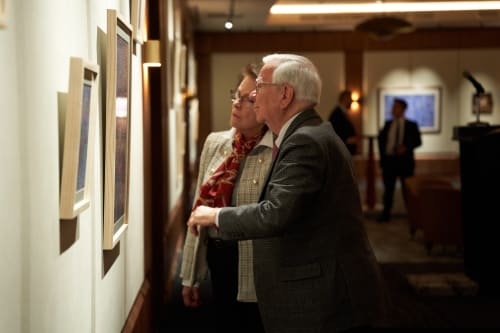"Unknown until yesterday, she will soon be one of the most significant artistic discoveries of recent years."
- Marcel Spion, Le Monde, 1949
Today, 76 years later, we return to quote this phrase with the weight of more than half a century of having overlooked it, even though it was always right before our eyes.
Emma Reyes has been a figure scarcely studied by academia in Colombia, largely because the myth of her life ended up eclipsing her work. Nevertheless, she is considered one of the most influential Colombian artists abraod. She was a confidante and mentor to creators such as Fernando Botero, Luis Caballero, Enrique Grau, and Antonio Barrera, and she surrounded herself with prominent artists and intellectuals of her time, such as Diego Rivera, Germán Arciniegas, Frida Kahlo, and Gabriel García Márquez. Her relevance starkly contrasts with the bibliographic void that has accompanied her figure in the national art historiography.
Born in Borgotá in 1919 and passing away in Bordeaux in 2003, Emma Reyes did not follow traditional academic paths. Her artistic journey was built through travel, intuition, and direct experience. She developed her own artistic genealogy, marked by her radical personality and her passage through cities such as Buenos Aires, Montevideo, Paris, Mexico City, Haifa, and Rome. Far from being repetitive, her work was nourished by a constant formal and technical exploration, expressing active invention and ceaseless dynamism.
Her painting is, in many ways, a lesson in vitality. There are works so charged with energy that they resist any fleeting or indifferent gaze. The constant element in her production is the line: a structural axis she adopted from childhood, when she learned the craft of embroidery. That obsessive and ever-changing line, as fine as thread or as thick as a dense brushstroke, does more than delineate forms- it constructs volumes, textures, and visual rhythms.
The works gathered in this exhibition belong to her period of labyrinths and inner passages, one of her most distinctive series and her first appraoch to abstraction. Inspired by the caves of Lascaux, near her home in Bordeaux, these pieces evolve toward an abstraction with a kinetic component, without abandoning her characteristic features: the repetition of forms, continuous lines, and the fragmentation of the image as a compositional method.
Emma Reyes was radical because she never sought to please the market or fit into a school. Her work is a body in constant transformation: a symbolic fabric in which painting, travel, pain, memory, and rebellion converge. Today, more than ever, it is necessary to construct an alternative historiography that recognizes her not as an exception, but as an origin within our visual identity.

